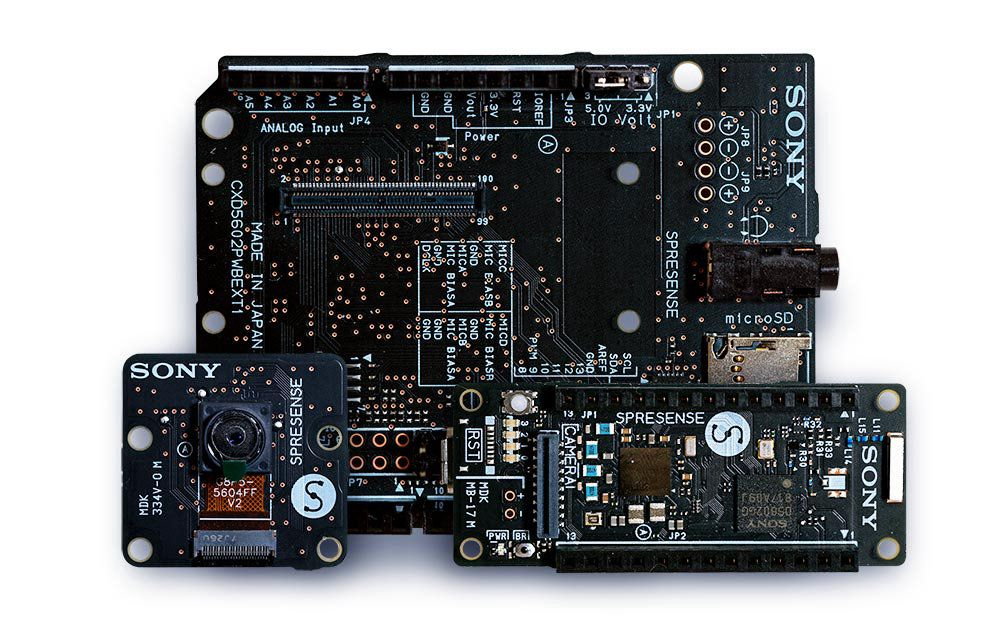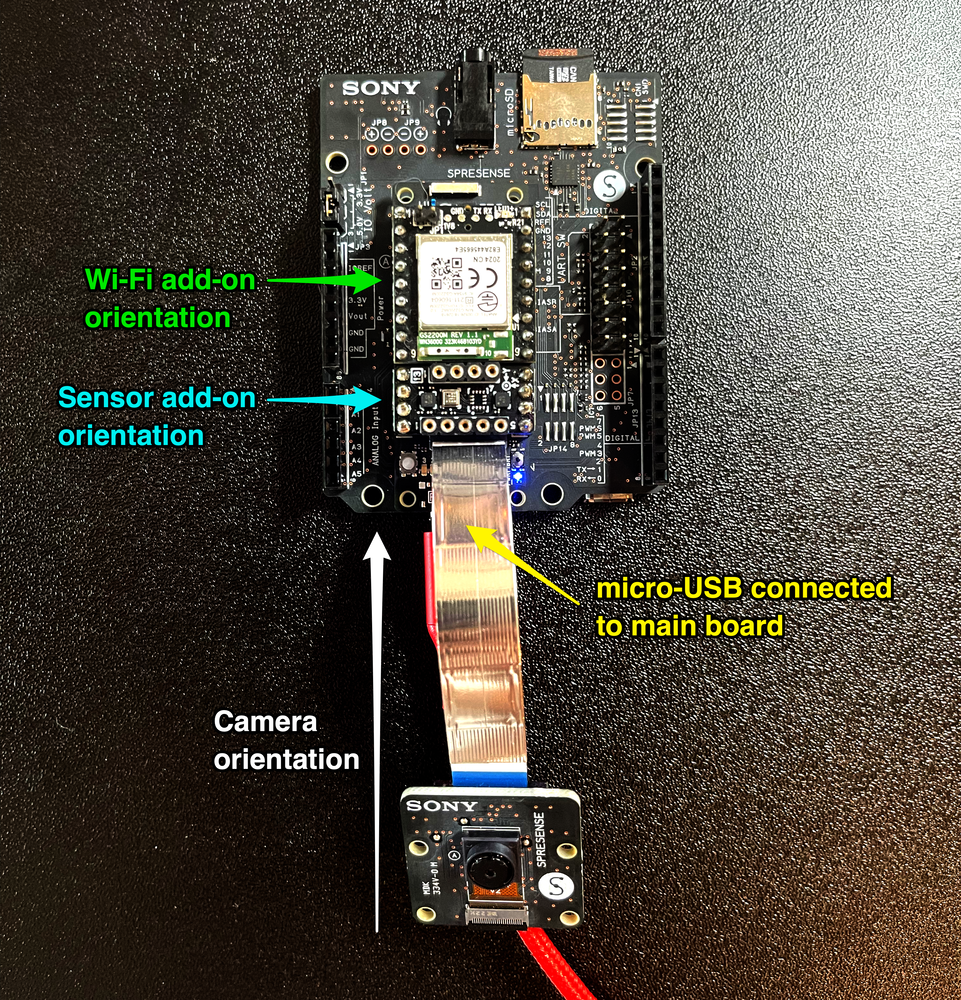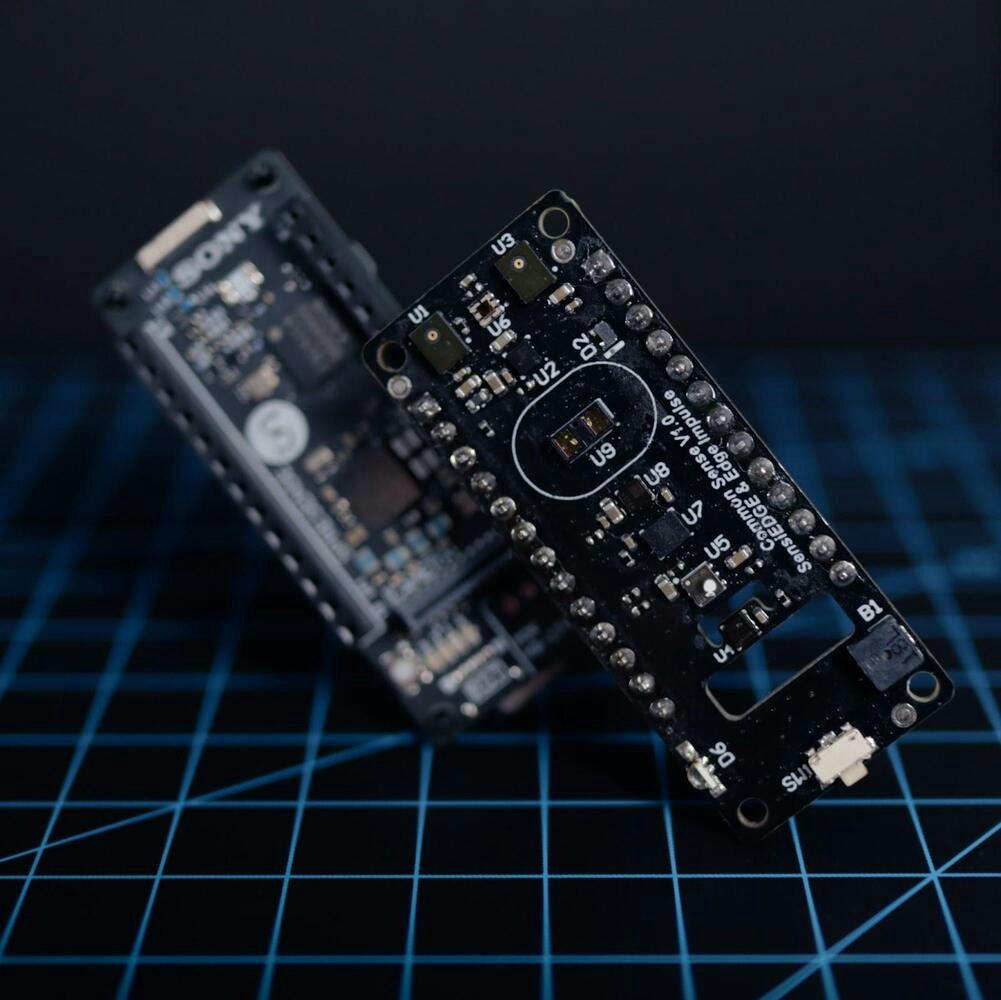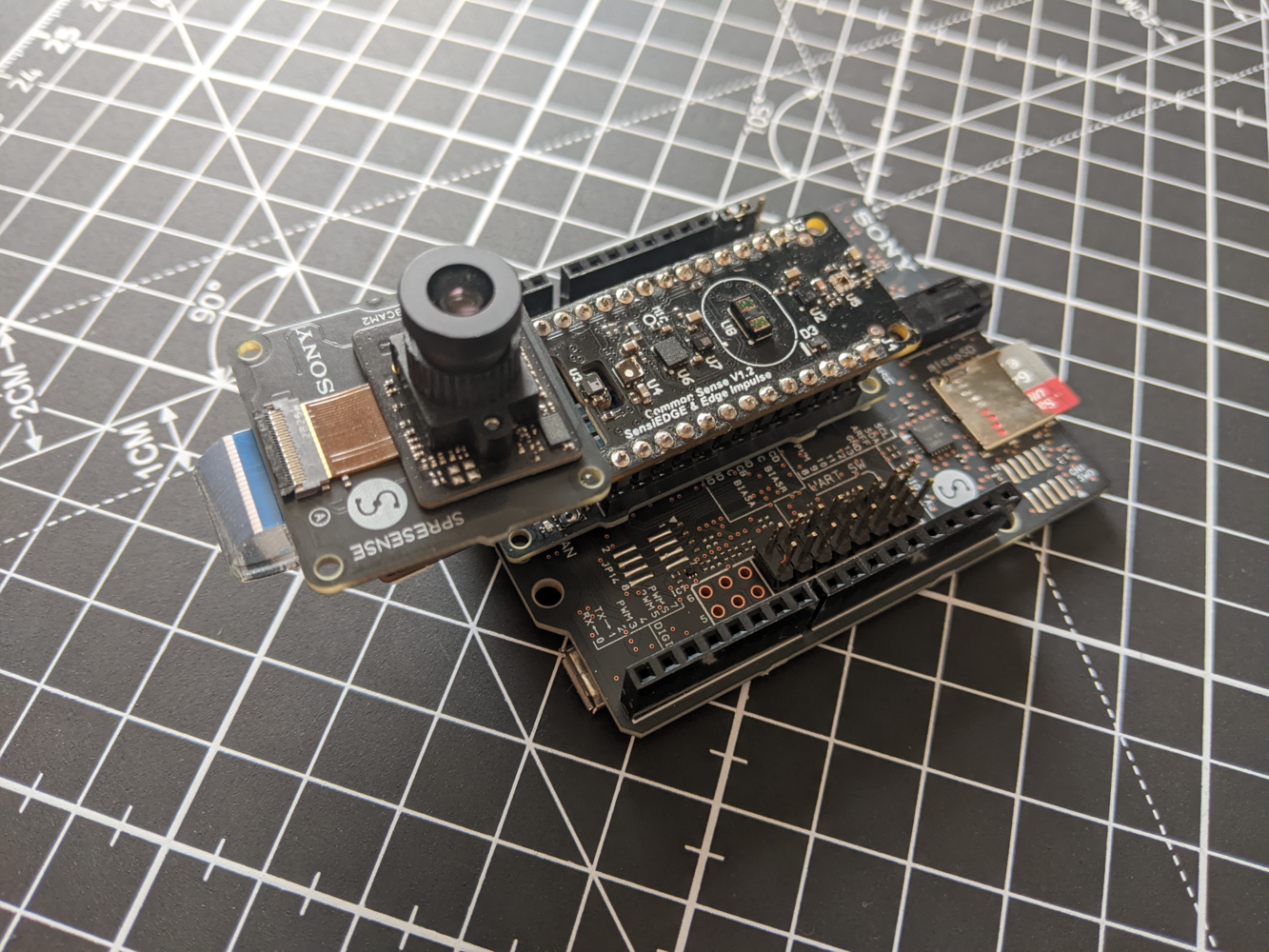- The Spresense Main Development board.
- The Spresense Extension Board - to connect external sensors.
- A micro-SD card to store samples - this is a necessary add-on as the board will not be able to operate without storing samples.
- For image models: the Spresense CXD5602PWBCAM1 camera add-on or the Spresense CXD5602PWBCAM2W HDR camera add-on.
- For accelerometer models: the Spresense Sensor EVK-70 add-on.
- For audio models: an electret microphone and a 2.2K Ohm resistor, wired to the extension board’s audio channel A, following this schema (picture here).
- Note: for audio models you must also have a FAT formatted SD card for the extension board, with the Spresense’s DSP files included in a
BINfolder on the card, see instructions here and a screenshot of the SD card directory here.
- Note: for audio models you must also have a FAT formatted SD card for the extension board, with the Spresense’s DSP files included in a
- For other sensor models: see below for SensiEDGE CommonSense support.

The Spresense product family.
Installing dependencies
To set this device up in Edge Impulse, you will need to install the following software:- Edge Impulse CLI.
- On Linux:
- GNU Screen: install for example via
sudo apt install screen.
- GNU Screen: install for example via
Connecting to Edge Impulse
With all the software in place it’s time to connect the development board to Edge Impulse.1. Connect the optional camera, sensor, extension board, Wi-Fi add-ons, and SD card

Spresense main board with attached camera, sensor add-on, Wi-Fi add-on, and extension board.
2. Connect the development board to your computer
Use a micro-USB cable to connect the main development board (not the extension board) to your computer.3. Update the bootloader and the firmware
The development board does not come with the right firmware yet. To update the firmware:- Install Python 3.7 or higher.
- Download the latest Edge Impulse firmware, and unzip the file.
- Open the flash script for your operating system (
flash_windows.bat,flash_mac.commandorflash_linux.sh) to flash the firmware. - Wait until flashing is complete. The on-board LEDs should stop blinking to indicate that the new firmware is running.
4. Setting keys
From a command prompt or terminal, run:Mac: Device choiceIf you have a choice of serial ports and are not sure which one to use, pick /dev/tty.SLAB_USBtoUART or /dev/cu.usbserial-*
--clean.
Alternatively, recent versions of Google Chrome and Microsoft Edge can collect data directly from your development board, without the need for the Edge Impulse CLI. See this blog post for more information.
5. Verifying that the device is connected
That’s all! Your device is now connected to Edge Impulse. To verify this, go to your Edge Impulse project, and click Devices. The device will be listed here.
Device connected to Edge Impulse.
Next steps: building a machine learning model
With everything set up you can now build your first machine learning model with these tutorials:- Keyword spotting
- Sound recognition
- Image classification
- object detection.
- Object detection with centroids (FOMO)
Troubleshooting
Error when flashing
If you see:Daemon does not start
If theedge-impulse-daemon or edge-impulse-run-impulse commands do not start it might be because of an error interacting with the SD card or because your board has an old version of the bootloader. To see the debug logs, run:
Welcome to nash you’ll need to update the bootloader. To do so:
- Install and launch the Arduino IDE.
- Go to Preferences and under ‘Additional Boards Manager URLs’ add
https://github.com/sonydevworld/spresense-arduino-compatible/releases/download/generic/package_spresense_index.json(if there’s already text in this text box, add a,before adding the new URL). - Then go to Tools > Boards > Board manager, search for ‘Spresense’ and click Install.
- Select the right board via: Tools > Boards > Spresense boards > Spresense.
- Select your serial port via: Tools > Port and selecting the serial port for the Spresense board.
- Select the Spresense programmer via: Tools > Programmer > Spresense firmware updater.
- Update the bootloader via Tools > Burn bootloader.
Sensor Fusion with Sony Spresense and SensiEDGE CommonSense
Edge Impulse has partnered with SensiEdge to add support for sensor fusion applications to the Sony Spresense by integrating the SensiEDGE CommonSense sensor extension board. The CommonSense comes with a wide array of sensor functionalities that connect seamlessly to the Spresense and the Edge Impulse studio. In addition to the Sony Spresense, the Spresense extension board and a micro-SD card, you will need the CommonSense board which is available to purchase on Mouser.
SensiEDGE CommonSense sensor board.
Getting started with CommonSense
Connect the Sony Spresense extension board to the Sony Spresense ensuring that the micro-SD card is loaded. Connect the SensiEDGE CommonSense in the orientation shown below - with the connection ports facing the same direction. The HD camera is optional but can be attached if you want to create an image based application.
Connect the CommonSense to Sony Spresense.
--clean.
If prompted to select a device, choose commonsense: